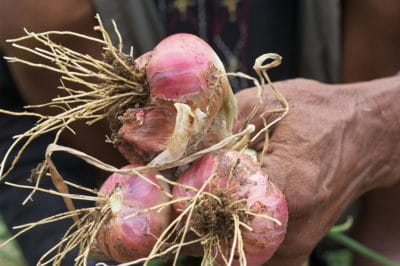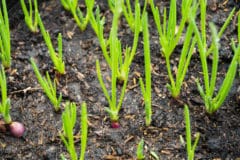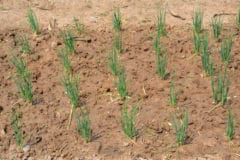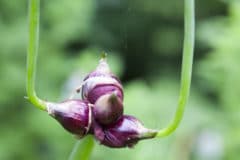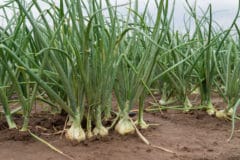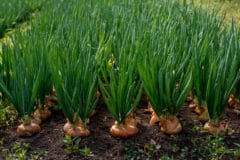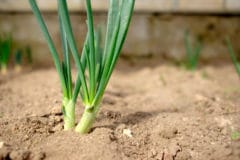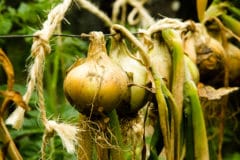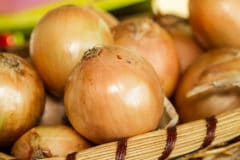When Shall I Harvest My Shallots?
In climates with mild winters, you can plant your shallots in the fall for a mid-summer’s harvest. In climates with colder winters, you’ll have to wait until spring for planting.
When you harvest your shallots depends on whether you are harvesting the leaves for use in salads, soups, and stews or whether you are harvesting the bulbs. If it’s the leaves that you want, you can begin harvesting them about thirty days after the begin growing. The bulbs take about ninety days to mature.
You should harvest your shallot bulbs when two-thirds to three-quarters of the leaves begin to fall over, whither, and turn yellow or brown. The leaves should feel dry when you touch them. The bulbs will begin to protrude above the ground, and the outer skin around the bulb will become papery the way an onion or garlic skin would.
How Shall I Harvest My Shallots?
To harvest the leaves, use scissors to clip off a few firm, green stems from each cluster as you need them throughout the growing season.
When it’s time to harvest the bulbs, don’t pull them up as you would green onions. Dig them up instead, but wait until the ground is dry. Clumps of damp soil clinging to the bulbs could prolong the drying that’s needed before you can store your shallots.
- Use a shovel, a digging fork, or a pitchfork to dig up your shallot bulbs.
- Insert the tines or the shovel blade into the ground three or four inches from the shallot leaves, but angle the shovel blade or the tines underneath where the shallot bulb should be.
- Push down on the shovel, digging fork, or pitchfork handle so that the tines or blade lift the shallot and a clump of soil up out of the ground.
- Gently shake off or brush away the soil surrounding the shallot bulb by hand. Avoid damaging the skin around the bulb.
How Shall I Store My Shallots?
You can use some of your shallots directly from the garden, but before you can store the remainder, you will need to cure them, or let them dry.
Curing Shallots
Weather permitting, you could spread our shallots out in a shaded area of your garden, but to be safe, it’s better to spread them out on a flat area someplace where it will be warm and dry, such as in your garage.
Curing shallots makes the flavor more mellow and lengthens their storage life. It takes one to four weeks. The skin around the shallots should be completely dry and feel crackly when you touch it.
Don’t wash or rinse your shallots before curing because that could prolong the curing period and give mold a chance to grow.
Storing Shallots
When your shallots are dry, use scissors to remove the stems and trim the roots. Avoid tearing the protective skin. Place the shallots in mesh bags or loosely covered ventilated containers and keep them in a cool, dry location where the temperature remains between 32°F and 50°F (0°C and 10°C) and where the humidity remains at 60 percent to 70 percent. Do not refrigerate your shallots.
You will be able to store your shallots for six months, or possibly longer. Do periodically check your shallots and remove those that have sprouted or become rotten. If you have shallots that sprout, try putting them in pots and growing them indoors.
Before you use all of your shallots, you could separate and save the healthiest and largest bulbs to plant for the next growing season.
